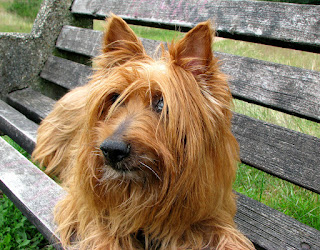Australian Terrier Breed: A Complete Guide
The Australian Terrier is a small but sturdy dog breed known for its energetic nature and affectionate disposition. As one of the first breeds developed in Australia, these dogs were originally bred for hunting and guarding. Today, they are cherished family pets, admired for their intelligence and loyalty. In this article, we'll delve into the characteristics, care needs, and unique traits of the Australian Terrier.
This breed is similar to the cairn terrier, This breed of terrier from Australia has small grayish wire hair. The ancestral types of dogs from which the breed descends wer from England, but this breed was developed in Australia. The Australian terrier is descended from Skye, yorkshire terriers and cairn, among others.
1. History and Origin
The Australian Terrier, often affectionately called the "Aussie," has a rich history dating back to the 19th century. This breed was developed by crossing various terriers, including the Cairn Terrier and the Dandie Dinmont Terrier, to create a versatile working dog. Initially bred to control vermin and guard properties, Australian Terriers quickly became popular for their fearless nature and keen senses.
2. Physical Characteristics
Australian Terriers are small, sturdy dogs with a distinctive appearance. Key features include:
Size: They typically weigh between 12 to 14 pounds and stand about 10 to 11 inches tall at the shoulder.
Coat: Their double coat consists of a harsh, straight outer layer and a soft undercoat. Common colors include blue and tan, sandy, and red.
Ears and Tail: The ears are small and pointed, while the tail is usually docked and carried high.
Eyes: Their dark eyes are expressive and full of curiosity.
3. Personality and Temperament
Australian Terriers are known for their lively and affectionate personality. They are intelligent and eager to please, making them relatively easy to train. Despite their small size, they possess a bold and fearless demeanor, often displaying a protective instinct toward their family.
These dogs are also highly social and thrive on companionship. They enjoy being part of family activities and are known to be good with children and other pets when properly socialized. However, their terrier nature means they can sometimes be stubborn and independent, so consistent training and positive reinforcement are essential.
4. Care and Maintenance
Caring for an Australian Terrier involves regular grooming, exercise, and attention to health needs:
Grooming: Their double coat requires weekly brushing to remove loose hairs and prevent matting. Regular trimming of the coat and nails is also necessary. Bathing should be done as needed, but not too frequently, to avoid stripping the natural oils from their coat.
Exercise: Australian Terriers are active dogs that need regular exercise to stay healthy and happy. Daily walks, playtime, and mental stimulation through training or puzzle toys are essential.
Diet and Nutrition: A balanced diet with high-quality dog food is crucial. Portion control and monitoring their weight can help prevent obesity, which is common in small breeds.
Health Concerns: While generally healthy, Australian Terriers can be prone to certain genetic conditions like patellar luxation and allergies. Regular veterinary check-ups and a healthy lifestyle can help prevent or manage these issues.
5. Training and Socialization
Training an Australian Terrier should start early, using positive reinforcement techniques. These dogs are intelligent and responsive, but they can also be independent, so consistency and patience are key. Socialization is equally important, helping them become well-rounded pets that are comfortable in various situations and with different people and animals.
6. Is the Australian Terrier Right for You?
Australian Terriers make excellent pets for families and individuals looking for a small, active, and affectionate dog. They are well-suited to both urban and rural living, provided they receive enough exercise and stimulation. However, potential owners should be prepared for the grooming and training needs of this breed.






.-The-cat-sits-elegantly,-reflecting-its-calm-demeanor-and-sophisticated-appearance,-with-soft,-flowing-fur-and-a-sl.jpg)
0 Comments